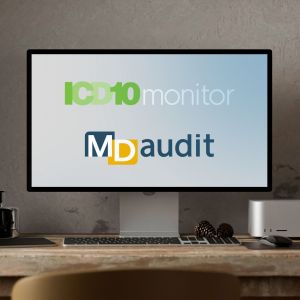When it comes to the financial health of today’s provider organizations, there are multiple factors converging that will continue keeping the C-suite up at night for the foreseeable future: tighter operational margins, shrinking reimbursements and an increasingly complex compliance landscape. It’s why many healthcare organizations are moving beyond traditional revenue cycle management strategies and fast-tracking adoption of more holistic revenue integrity practices. Optimal strategies are now characterized by collaboration between all billing and compliance functions to address all sides of a claim. When these departments work together, they can improve revenue capture through strategies that combine the strengths of prospective auditing to promote clean claim submission from the outset with the power of retrospective auditing to speed process improvement initiatives.
In fact, there are five trends that are shaping rapid adoption of holistic revenue integrity strategies:
1. Increased Audit Activity
Since 2019, compliance risk for providers has increased significantly. Between fluid COVID-19 guidance and incentives and the introduction of new telehealth and Evaluation and Management (E&M) codes, billing teams have had a lot keep up with over the past couple of years. Working in tandem with these developments are numerous indicators that a significant uptick in audit activity is coming. In late 2019, HHS’s Office of the Inspector General (OIG) recommended that the Centers for Medicare and Medicaid Services (CMS) recover $54.4 million in improper payments to acute care hospitals due to incorrectly coded claims. And, as expected, the OIG recently announced its audit plans related to COVID-19 discharges.
2. Greater cash flow concerns
A perfect storm of financial issues introduced by COVID-19 left already lean provider operations with no cushion. One report released in September 2020 suggests that for-profit hospitals will continue to see a financial decline for another 12-18 months. From loss of revenue associated with elective procedures and outpatient visits to supply chain impacts, providers are facing greater cash flow issues that necessitates accurate and complete capture of all revenue opportunities.
3. Rapid adoption of telemedicine
The vast majority of industry stakeholders acknowledge that remote models of care are here to stay. For many providers, telehealth is unchartered territory that poses notable risks for reimbursement. To avoid claim denials and revenue cycle bottlenecks, providers are looking to revenue integrity strategies that promote complete, accurate capture of documentation necessary to support coding and billing activities.
4. Emerging technologies
By their nature, revenue integrity processes are data hungry. Thus, manual approaches often require substantial resources. The good news is that technological advancements such as augmented intelligence (AI), machine learning and natural language processing (NLP) are making it easier than ever to implement sustainable revenue integrity strategies.
5. Move from reactive to proactive
In all operational areas, providers are increasingly seeking best practices that let them get ahead of potential problems. Revenue integrity addresses this aim when it comes to financial health. Technology-enabled processes are helping providers monitor such areas as case mix index, elective surgery trends and average lag days from denial resubmission to adjudication, which allows them to more rapidly detect data anomalies and outliers that can impact financial performance.
Forward-thinking healthcare organizations are looking to solutions like MDaudit Enterprise to support revenue integrity strategies and dramatically improve the bottom line through automation, analytics and AI. The financial challenges for today’s providers may not be over, but there is an opportunity to capitalize on a holistic strategy to improve the outlook and support future positioning.







